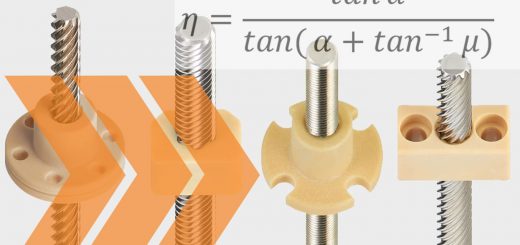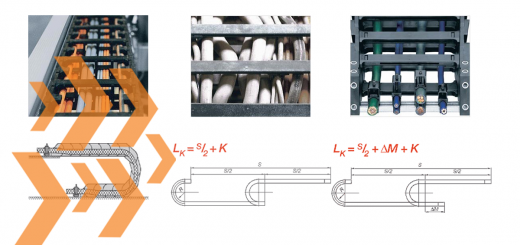Understanding and Reducing Unplanned Downtime in Manufacturing
By Shizu Yamaguchi, edited by Jared Worth
According to a recent study, 78% of people aren’t ready for their retirement (Coxwell, 2022). This lack of foresight mirrors the issue of unplanned downtime in manufacturing. Both retirement and downtime are unavoidable and costly, yet people often fail to plan for them. While retirement is a subject for another article entirely, today we will focus on unplanned downtime. We will get into the nitty-gritty of the topic: what it is, why it happens, how much it costs, as well as ways of handling it more constructively.
What is unplanned downtime?
Unplanned downtime is an interruption of production processes that was not predicted, caused by machine breakdowns or failures, operational issues, or power outages.
Planned downtime, on the other hand, is defined as a production stoppage that is scheduled, for example, to undergo machine maintenance (Fabrico, 2023).
What is reactive vs. proactive maintenance?
A reactive approach to maintenance means fixing issues when they happen. This way of going about maintenance is also known as ‘run-to-fail’ or a ‘fix-it-when-it-breaks’ ethos (Brightly, 2023).
In contrast, a proactive approach to maintenance focuses on preventing equipment issues before they occur. This strategy involves regular inspections, use of predictive analysis, and scheduled interventions (SafetyCulture, 2024)/(Christiansen, 2024).
What are some common causes of unplanned downtime?
- Skipping maintenance, which leads to equipment breaking down.
- Using old or obsolete machines that slow everything down.
- Outdated software causing compatibility and security headaches.
- Mistakes by operators due to lack of training.
- Not tracking issues, making it hard to prevent future problems (Immerman, 2018).
What is the cost of unplanned downtime in manufacturing?
Over 80% of companies are not able to calculate their true downtime costs accurately, and most companies underestimate their downtime costs significantly (Immerman, 2018).
According to a report by LinkedIn, the dollar amount varies, ranging from USD $100,000 an hour (Rain Engineering, 2023) to a whopping $2 million an hour (Siemens, 2023).
The costs are very high for companies to persist with a reactive approach to maintenance.
So, let’s come back to this question: why does unplanned downtime really occur?
Referring back to our retirement puzzle: why do people fail to plan for retirement? There are two main reasons. The first is they don’t know where to start. Most people find it so overwhelming to get to planning for their retirement, that they avoid it altogether. The second is uncertainty. Most people also believe that life is so uncertain that it doesn’t even make sense to plan (Coxwell, 2022).
You will see hints of these ideas in the reasons for persisting with a reactive approach to maintenance as well:
- Managers may work under pressure to keep their production line running, which could lead them to focus less on prevention of failures than fixing them on the fly (overwhelm). They are just racing from one failure to the next.
- There may not be sufficient budget or staffing to implement proactive maintenance (overwhelm).
- Uncertainty as to when issues may arise due to lack of data or analytics could make preventative measures difficult to implement (uncertainty).
- The company culture may favour reacting to problems rather than being proactive.
- Maintenance managers may simply not be aware of the benefits of a proactive approach, or they might lack the training to enable them to be proactive (Brightly, 2023).
There are some obvious costs to a reactive approach to maintenance, but there are various reasons why a reactive approach takes place. A proactive approach would seem like a good idea in theory but when we get boots on the ground, often a reactive approach takes precedence. So what should be done?
Let’s dive into the proactive approach and the benefits of doing so.
What are the benefits of a proactive approach to maintenance?
One question that might be on your mind as a maintenance manager may be WIIFM or “What’s in it for me?”
Taking another page again from the retirement analogy, better planning could mean that planners feel more confidence and less stress. Moreover, because of the cost savings and other benefits to the production process (listed below), championing proactive maintenance could lead to career benefits, such as a raise or a title change. Additionally, the risk of line down is drastically reduced.
What are some other benefits of proactive maintenance?
- By addressing potential issues before they lead to failures, proactive maintenance can save significant amounts of money. This includes reduced repair costs, lower shipping costs, less downtime, and lower labour costs.
- Regular maintenance and timely repairs can extend the lifespan of machinery, delaying the need for expensive replacements.
- With fewer unexpected interruptions, production processes can run more smoothly and efficiently, leading to higher productivity.
- Proactive maintenance can also improve workplace safety by ensuring that all equipment is in good working condition, reducing the risk of accidents.
Implementing Proactive Maintenance
Transitioning from a reactive to a proactive maintenance strategy requires a paradigm shift and a commitment to change. Here are some practical steps to get started:
- The first step is to raise awareness about the costs and causes of unplanned downtime. Educate your team about the benefits of proactive maintenance and the long-term savings it can bring.
- Provide ongoing training to keep operators and maintenance personnel up to date with the latest best practices for maintenance.
- Apply predictive maintenance or condition monitoring tools to monitor your equipment. These tools use data and analytics to predict when a machine is likely to fail, allowing for timely interventions, reduced downtime, and increased equipment lifespan.
- Consider bringing in external experts to assess your maintenance needs and provide guidance. Companies like igus offer services to help manufacturers implement effective maintenance strategies and optimize their operations.
Conclusion
Unplanned downtime is a costly and disruptive issue in the manufacturing industry. However, by shifting from a reactive to a proactive maintenance approach, manufacturers can significantly reduce downtime, save money, and improve productivity. Working with partners and technology to raise awareness, invest in training, and implement predictive maintenance are all critical steps in this transition.
If you’re ready to take the next step towards proactive maintenance, consider reaching out to experts who can help you assess your needs and implement effective strategies. For more information, visit www.igus.ca or contact us via live chat or phone at 1-800-965-2496.
“This blog post was created with the assistance of Microsoft Copilot, an AI-powered writing tool that helps generate and refine content.”
References
Brightly. (2023, September 21). Reactive vs. Proactive Maintenance: What’s the Difference? Reactive vs. Proactive Maintenance: What’s the Difference? | Brightly (brightlysoftware.com)
Christiansen, B. (2024, April 5). Proactive Maintenance Demystified: Meaning, Examples, Pros, and Cons. Limble. Proactive Maintenance Demystified: Meaning, Examples & Benefits (limblecmms.com)
Coxwell, K. (2022, May 26). 78% of People Aren’t Ready for Retirement: The Good News? Everyone Can Improve Their Financial Prospects. NewRetirement. 78% of People Aren’t Ready for Retirement: The Good News? Everyone Can Improve Their Financial Prospects | NewRetirement
Fabrico. (2023, October 4). The Costly Impact of Unplanned Downtime in Manufacturing. The Costly Impact of Unplanned Downtime in Manufacturing – Fabrico
Immerman, G. (2018, November 14). The actual cost of downtime in the manufacturing industry. IIoT World. The actual cost of downtime in the manufacturing industry – IIoT World (iiot-world.com)
Rain Engineering. (2023, October 17). Latest Report: Unplanned Downtime Costing Manufacturers Over $100,000 an Hour! https://www.linkedin.com/pulse/latest-report-unplanned-downtime-costing-manufacturers-over-100000-soayc/
SafetyCulture Content Team. (2024, July 12). Proactive Maintenance. SafetyCulture. How to Implement Proactive Maintenance | SafetyCulture
Siemens. (2022). The True Cost of Downtime 2022. Siemens · Data sheet · A4 portrait



